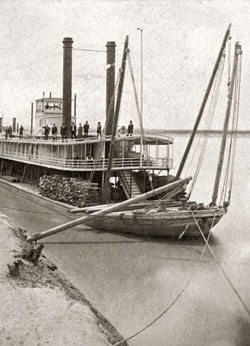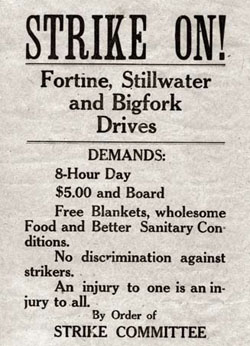Montana: Stories of the Land
Companion Website and Online Teacher's Guide
Chapter 12 - Logging in the "High Lonesome," 1862-1949
Chapter 1 - Montana: Where the Land Writes History
Chapter 2 - People of the Dog Days
Chapter 3 - From Dog Days to Horse Warriors
Chapter 4 - Newcomers Explore the Region
Chapter 5 - Beaver, Bison, and Black Robes
Chapter 6 - Montana's Gold and Silver Boom
Chapter 7 - Two Worlds Collide
Chapter 8 - Livestock and the Open Range
Chapter 9 - Railroads Link Montana to the Nation
Chapter 10 - Politics and the Copper Kings
Chapter 11 - The Early Reservation Years
Chapter 12 - Logging in the "High Lonesome"
Chapter 13 - Homesteading This Dry Land
Chapter 14 - Towns Have Lives, Too
Chapter 15 - Progressive Montana
Chapter 16 - Montana and World War I
Chapter 17 - Montanans on the Move
Chapter 18 - The Great Depression Transforms Montana
Chapter 19 - World War II in Montana
Chapter 20 - Building a New Montana
Chapter 21 - A People's Constitution
Chapter 22 - Living in a New Montana
Learning From Historical Documents
Letters from F. D. Becker to Gov. S. V. Stewart, 1917. Montana Council of Defense records, 1916-1921. Record Series 19. [box 2 folder 15]. Montana Historical Society Research Center. Archives. Excerpted in Not In Precious Metals Alone: A Manuscript History of Montana (Helena, 1976): 251.
Context for the F. D. Becker Letter:
Labor strife in the timber industry during the summer of 1917 created bitterness on both sides of the issue. Patriotism during World War I translated into an opposition to strikes and militant unionism, promoting accusations of treason and obstructionism from lumber owners when workers tried to organize. In response to a timber industry strike led by the Industrial Workers of the World (known as the IWW or Wobblies), Montana's governor called out the militia to preserve the peace and allow lumbering operations to proceed. Depending upon the interests involved, two views of the roles and methods of the Wobblies existed, and Governor Stewart received letters expressing both. Letters written by F. D. Becker, Secretary of the Montana Lumber Manufacturer's Association, typified the sentiment the lumber owners had towards the Wobblies. But the governor also received mail from supporters of the IWW, including this letter from Sanders County attorney Wade Parks.
-
See historic photos while listening to someone read the excerpt.
- Complete a Written Document Analysis Worksheet.
About Primary Sources:
Letters, diary entries, census records, newspapers, and photographs are all examples of "primary sources," material created at a particular moment in the past that has survived into the present. Primary sources can provide clues to the past. They are our windows into an earlier time. The Montana Historical Society contains thousands of primary sources. In the 1970s, archivists collected just a few snippets into a book, which they called Not in Precious Metals Alone: A Manuscript History of Montana. That book is now on the web in its entirety. The above sample from that book relates directly to this chapter.


